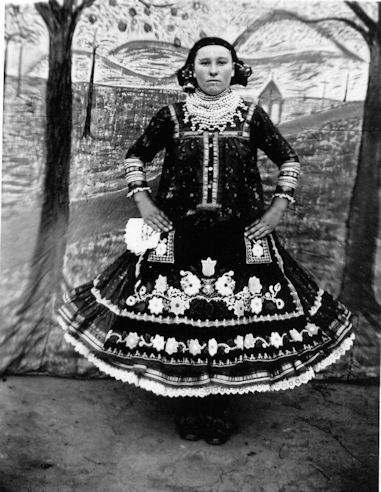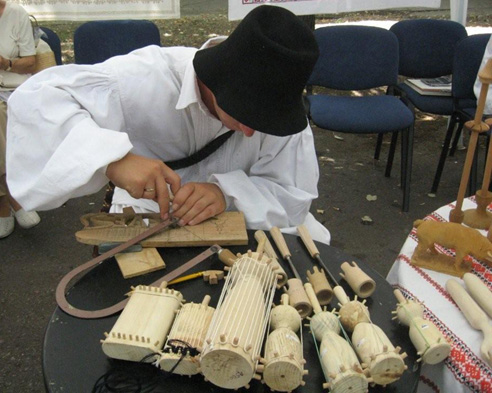Folk Culture
When it comes to Slovaks in Vojvodina they are perceived like a phenomenon that exists over two and a half centuries which also resists the impact of the foreign ethnicity. The unique perception of this national minority comes out of the fact that Slovaks in Vojvodina are in the foreground when it comes to preservation and origination of their own traditions and Slovak identity abroad.
The identity of Vojvodina Slovaks with all its specifics and personalities comes out of the original Slovak culture but the superstructure is defined by the new context. Whereby the long process of searching, adapting and subduing the devastated land of the so called Low land, when referring to Slovaks they showed great patience, effort and endurance because their motivational force was to ensure a better life and family welfare. But still beside all unpleasing circumstances Slovaks did not forget about the basic values which were of a great importance back in their mother land, Slovakia.
 |
The foundations of the whole national doings, expression of spiritual culture also the handicrafts and business development is shown in the half of the 19th Century. In that time the support of the intelligence had its consequences which led to a social organization of the Slovak society.
The Slovak community in a new environment had to overcome a cultural breakdown which was of a great importance and also they had to adapt to a new conditions. The basis of a peasant family was the soil. For the Slovak small towns in Serbia the main source for life but also the social position criteria was the soil. From the traditional material culture of homeland the Slovaks kept some archaic forms like harvesting and cultivation of the land and many other traditions when it comes to Slovak meals. But there have been changes when it comes to food of Vojvodina Slovaks because of the diversity of the food.
Because of the geographical, social and economical situation in the new environment the changes have been made in the traditional garb. Meaning not only the use of different material but also the changes in design mostly the outwear.
Photo: Mária Ivičiaková |
In the new state of Serbs, Croatians, Slovenians the stronger bond of Slovaks was almost compelling to their origins mostly because of the heterogeneity of the whole region. The confidence and pride of their origins and the respect to the traditions is visible trough engaging of individuals into the public life. The interest groups start to rise up. Later on they became a divided segments of culture which grew into associations which nowadays are the carriers of Vojvodina's Slovaks culture.
The interest groups didn't have the goal to nourish the cultural heritage. The Slovak minority gathered together and joined those associations because they wanted to be side by side with the age they lived in. They wanted to be equal with the other state citizens, to be informed, to have their own newspapers, print, to educate them selves in their own language, to be informed about the age innovations, and to help those who need it by founding different fonds. The support they often found in personalities from their motherland whose names are of a great importance even in the history of Serbia.
Photo: Pavel Zríni |
Over time in the second half of the 20th Century, the spontaneous manifestations are replaced with organized forms of preserving and animation. It is a method by which the established values are transmitted on a new generations and the organized nourishment of the archaic elements which are nowadays traditional.
Similar states about folk culture of the Slovaks in Vojvodina are worked trough in this par of the web page. Authors of those posts that are about cultural and art associations, folk garbs, traditional handicrafts and meals are offering informations for those who are Slovaks in Vojvodina so that they do not forget their origins and by knowing the truth they know the way of their course.
Milina Sklabinská


















